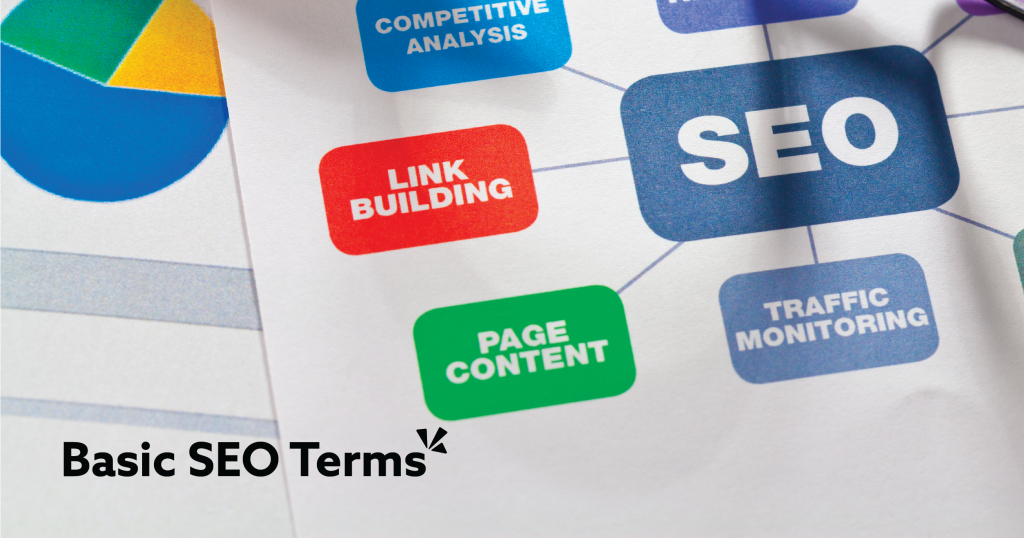Basic SEO Terms

Maybe you’ve heard of SEO before and want to learn more, or maybe you’re not sure what SEO is. In this quick guide we will cover some basic SEO terms to help broaden your knowledge.
SEO
SEO stands for Search Engine Optimization, which essentially means to optimize your website in a way that shows value to search engines. Search engines want to give their searchers the best information available, so you should write your website content to do exactly that. If your website has value (such as helpful content) and appears trustworthy, search engines will rank your website well.
Search Engines
Google, Bing, and DuckDuckGo are all examples of search engines. Search engines provide results that answer searcher’s questions by ranking which webpages are the most useful to the inquiry. Without search engines, we would be lost in the massive amount of information on the World Wide Web and be unable to find anything.
Bots
A bot is a web crawling software program, that visits a website, or sites, and catalogs the information it finds. When bots are used by search engines, it is to find, collect, and use that information to create search results for searchers.
Keywords
Keywords are the words or terms when searched for that you want to rank or “appear” in search results. Many businesses will perform keyword research to see what people use when searching Google for a business like them. The best keywords will help you reach your intended audience. For example, a plumber may want to show up on search engines for the terms “water leak repair” or “plumber near me.”
SEO Title
When you search for anything on Google, the results are shown in a list. Each result has a title you can click on to bring you to the website and description. The (often blue) link is your SEO title. It should include your business’s name and what service or products you offer. These titles are added on the back side of your website to each page and inform search engines what the page is about.
Meta Description
Search results show a description of what’s included on the webpage, this is the meta description. At a quick glance, searchers will know if that website will be helpful to them. If the meta description isn’t specified on the back end of your website, Google will pull some text from the content of the web page.
Outbound and Inbound Links
Outbound links are links that lead to someone else’s website. They are a great way to add value to your website, especially if used to back up your information by referencing your sources. Keep in mind that these links will lead your viewers away from your website.
Inbound links, also known as backlinks, are on other websites and lead to your website. Inbound links are great for SEO, because it shows search engines that your website is valuable enough for others to mention it.
Internal links
Internal links lead to another page or section of a page within your website. An example is the classic “Contact Us” button that leads to the contact page. Internal links connect your website and help search engine bots crawl your website.
Alt text
Alt text is short for Alternative Text. Alt Text is added to photos to give context to anyone who is visually impaired and uses a device that reads off websites. It’s also helpful in situations where a photo doesn’t load. Search engines want websites to be inclusive, so everyone has the capability of finding the answers they need online.
Although these are just some of the basic terms associated with SEO, when you put the searchers first, you’re on the right path. The most important thing to remember is to write content using helpful information filled with proper keywords, links, and alt text. Creating the right SEO can be a challenge. If you would rather have someone experienced in SEO take care of it on your website, contact the experts at Pinnacle Marketing Group.
